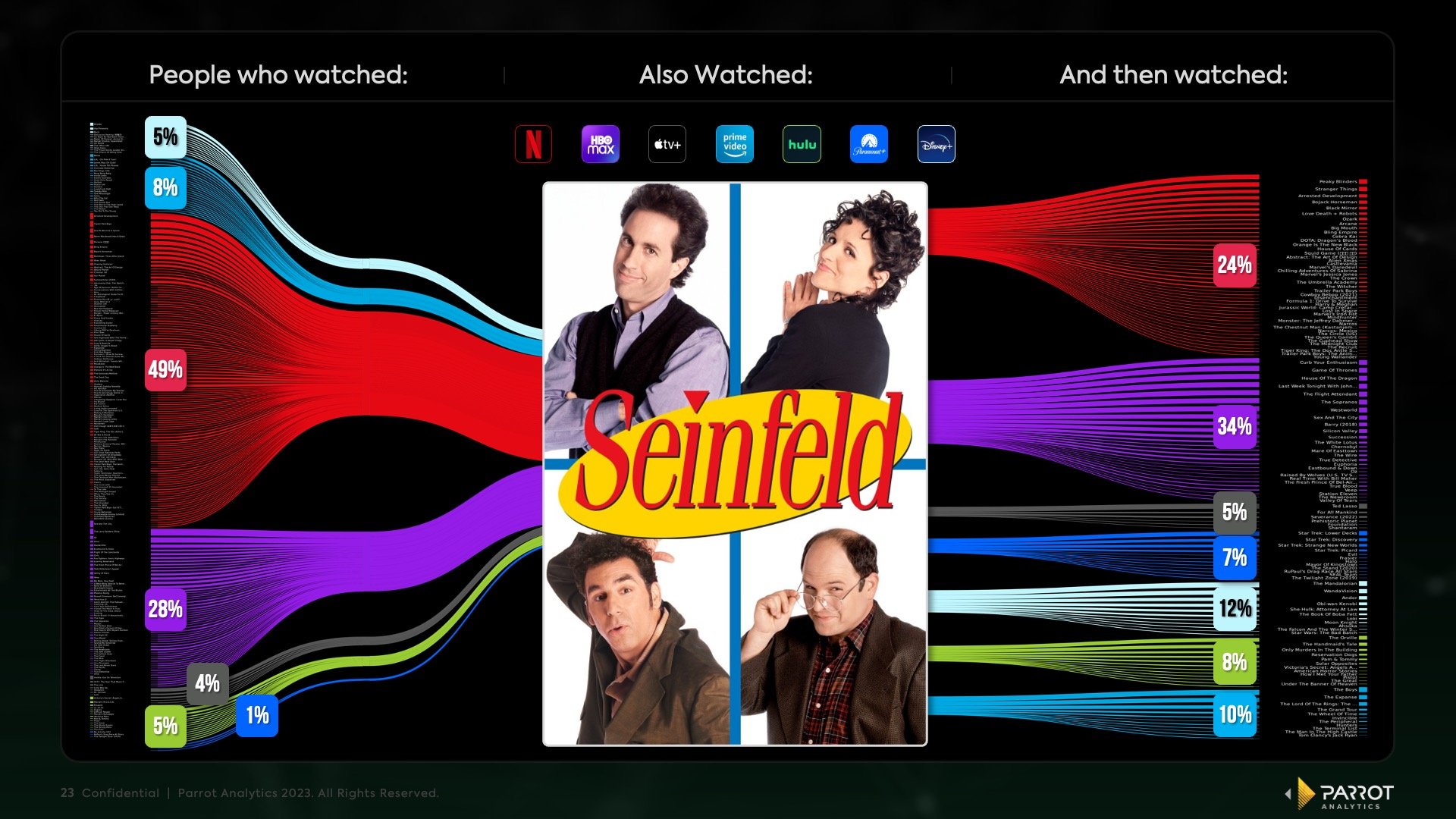Masters Of Their Domain: Tracking Seinfeld’s Affinity Data
Where does viewership come from, where does it go, and how can you guide it to make the best possible decision? No, this isn’t the start of a bad walk-into-a-bar joke. It’s the central series of questions every streaming and content executive should be asking.
Let’s use Seinfeld as an example. Netflix reportedly paid more than $500 million for the global streaming rights to the classic comedy. According to Parrot Analytics affinity data, 28% of the sitcom’s viewership on Netflix typically comes from users leaving Max. After consuming Seinfeld on Netflix, 34% of that viewership leaks back out to Max. What does this mean in practical strategy terms?
For production company Sony Pictures Television, it suggests that Seinfeld is a strong fit with Max’s library (with obvious ties to Curb Your Enthusiasm) thanks to the sizable shared audience overlap. This could pave the way for a future potential licensing agreement with the streamer should anything change with Netflix.
In the more immediate present, Seinfeld’s affinity data reveals that viewers are often coming to the show from other sitcoms and then following up their Seinfeld binges with more sitcoms. That’s an impressive level of genre affinity and underscores how sticky sitcoms can be. This is crucial for content portfolio development and optimization—how to construct a library of acquisition and retention titles in a cost efficient manner.
Understanding these viewership cycles enables platforms and content owners to better plot out a course of action for the short and long-term.


